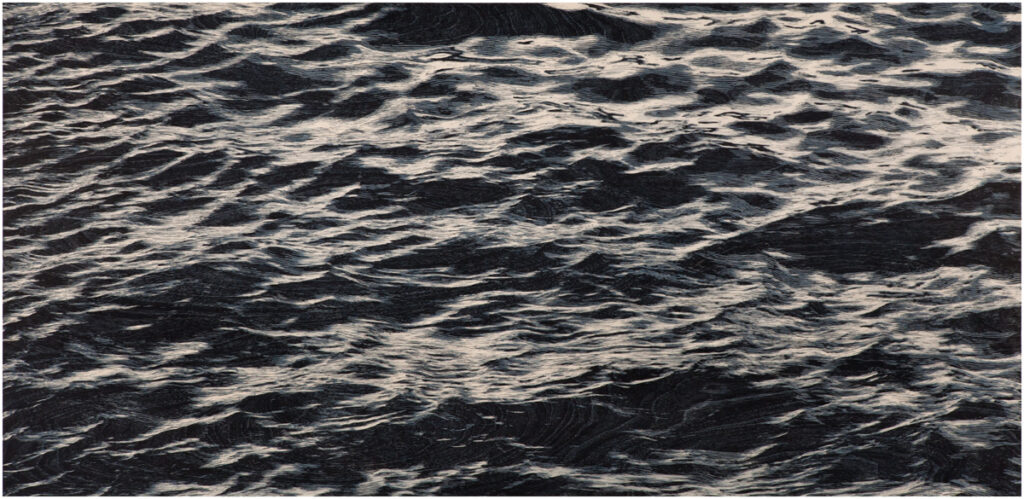
“To perceive the permanent movement, the forces that are born deep, the cycles of nature, the power of silence, that which vivifies, the life of the waters, strength and softness, the murmur, coming and going, listening to what pulsates.”
The project addresses the issue of impermanence in the great cycles of nature through the woodcut image of water, transformed by different impressions and video projections, seeking to awaken the senses to the internal processes of nature that interfere and suffer interference from Man and to the Time that governs and manifests itself in these processes. In addition to the clear environmental and existential bias, the project seeks to broaden the appreciation and reflection of Contemporary Engraving, revealing its changing aspect, based on elements such as scale, diffusion, dialogue between modern and traditional technologies, occupation of space, relationship between photography and engraving , memory. The project also explores the possibilities of interaction between music, video and printed image and experiments with the possibilities of mutual interference between the visitor and the work. To this end, it generated multidisciplinary research and the creation of musical, video, engraving and interface systems based on the collaboration of musicians, artists and students. The project also discusses the possibilities of circulating and enjoying the work of art in different contexts and formats, based on a set of actions that bring together different cultural facilities in the city.
The need to work on building symbolic, meaningful references that requalify the relationship that man has with his own existence and with what he considers nature, favoring a state of finer perception, seems to be of paramount importance in times of fragmentation, objectification and loss of sense of self and the other. The role that the work of art can assume in preparing the new generations, creating this space for meaningful, reconnecting experiences, can produce a subtle but perennial impregnation in our socio-cultural context, transforming it.
The first proposal related to the tide began in an artistic residency carried out by Ernesto Bonato at the Unicamp Institute of Arts, between August 2011 and July 2012. The main activity was the elaboration of a large woodcut about the image of water, executed by the artist and by students. Part of the result of this experience was exhibited at Unicamp’s Art Institute Gallery and Pinacoteca Station in São Paulo, in 2012. After the end of the residency, the project was expanded, aiming at the interaction of different artistic languages and creators, while still maintaining the commitment with the training of art students. The result is the project tide.02, an installation consisting of several large woodcuts, wooden matrices, posters, video projection and music, composed for installation by Âmago Trio, in addition to educational actions and urban interventions in partnership with the Xilomóvel Ateliê Itinerante and 03 institutional spaces in Campinas (MACC, Estação Cultura, Instituto de Artes da UNICAMP).
The set of achievements that we call tide.02 received support from the São Paulo State Culture Incentive Program (PROAC) and the São Paulo State Secretariat for Culture.
Long before that, however, in 2000, during an artistic residency season at Atelier Presse Papier, in the city of Trois-Rivières, Quebec, the first insight occurred that would serve as the basis for all subsequent works related to water, through some actions that the artist carried out on the banks of the Saint Laurent river, a large river in Canada. This theme of water was taken up again in another remarkable experience, in 2004, in the work Traversée, a digital projection made in the pool of the Consular House of France, in São Paulo, and in 2006, with the beginning of the series of woodcuts called Deambulatório, still in course. But also in the constant visits to the Macuco Basin and the port of Santos, on the coast of São Paulo, to draw, from which the mural projects Canal, from 2002 and Santos, from 2006, in addition to the large woodcut of the moon, from 2000, taken up again in 2007.
Courtesy of Galeria Gravura Brasileira, Sao Paulo, Brazil.
